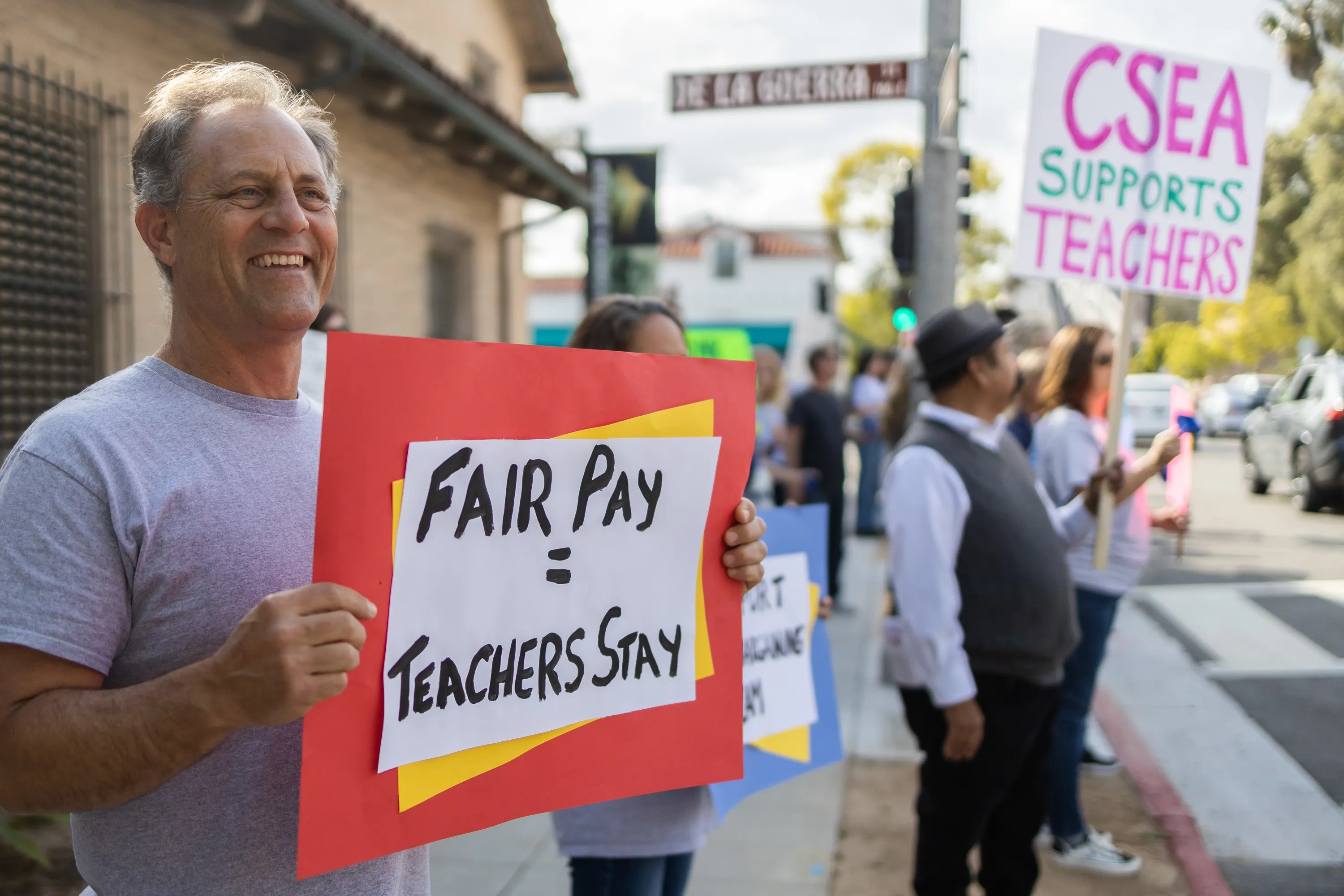Santa Barbara Unified Agrees to Early Contract Negotiations with Teachers Association
Educators Pack Tuesday’s School Board Meeting to Ask District to ‘Stop Stalling’ and ‘Start Bargaining Now’

Nearly two months into the school year, some classes still lack teachers in the Santa Barbara Unified School District, as noted by members of the Santa Barbara Teachers Association (SBTA) who spoke at the district’s school board meeting on Tuesday.
Educators packed the overflowing boardroom to ask the district to “stop stalling” and open negotiations as soon as possible to address their requests for better pay and other improvements to lower teacher turnover, a recurring sight since the first teacher protest earlier this year.
The district said they’ve been communicating regularly with SBTA leaders regarding when to begin negotiations and that, following through on their commitment from spring, they “look forward to an earlier-than-normal start date for negotiations with SBTA.” Contract negotiations were originally scheduled for early 2024 for the 2024-2025 school year, as the current term expires on June 30, 2024.
“On Friday, October 6, the District and SBTA leaders agreed to start negotiations after the November 14 board meeting, and agreed on November 15 as our first negotiation session,” the district said in a statement. “We also agreed to other dates to negotiate before the December winter break. These dates are earlier than past negotiations, which started in January or February.”
The district said that the negotiations will focus on a new contract, and collective bargaining law requires the district and its labor partners to negotiate over a variety of issues — including salaries and benefits — in a good-faith effort to reach an agreement.
However, union president Hozby Galindo claims that the SBTA submitted its “sunshine” letter — a required public declaration of initial bargaining topics before returning to the bargaining table — to the district on September 8. He said that the district had communicated to SBTA that they would put the letter on the September 26 and October 10 agendas, which would make negotiations available as soon as October 11.
As of the October 10 board meeting, the district administration has not shared the letter with the school board or the public, he said, adding to the wait time to begin negotiating. Many educators at Tuesday’s meeting emphasized that they want to “start bargaining now.”
“We made it very clear that we wanted to start negotiations earlier,” Galindo said.
The next board meeting is scheduled for October 24, the agenda for which has not yet been released.
At Tuesday’s board meeting, educators in the district argued that the discrepancy between their salary scale and the cost of living in Santa Barbara is driving away experienced staff, which is impacting students’ education. More than 100 new teachers and staff had to be hired to fill the positions left by educators who had resigned last school year.
Galindo added that without a competitive pay scale in the district, it is harder to attract and retain teachers. Currently, they have no specific number in mind for wage negotiations, which Galindo attributes to a “lack of transparency” around the district’s budget that makes it “harder to home in on a number” that works for both the district and educators. But that budget is still in the works — the district usually waits until the New Year to start negotiations to get a more solid idea of property tax revenue and Governor Gavin Newsom’s budget, which comes out in January.
Against the backdrop of a boardroom full of teachers holding bright placards, Bethany Güereña, a special education teacher at Santa Barbara Junior High, told the school board that the district began the school year with eight vacancies in special education, including one at her school.
“The students are the ones who are paying the price for these vacancies in special education and across the district,” she said.
Other educators who spoke expressed disappointment at seeing respected teachers and staff, their friends, leave for better-paying jobs in other districts and told personal stories of long commutes from other cities, second jobs, and tireless efforts to make up for vacancies in their schools.
Kelly Keene, a former English teacher at San Marcos High School, resigned last spring after teaching for seven years. She told the Independent that she ultimately decided not to return to the district because of pay.
“The last three years I taught in Santa Barbara, I had a second job on nights and weekends just to pay rent,” she said. “It has been difficult to change these conditions, because attending union and board meetings requires many of us to miss shifts at other jobs in order to advocate for change.”
Galindo said the union asked district administration for a list of unfilled positions on September 29, but said the district has not yet provided it.
Salaried employees — including all classified, certificated non-management, confidential, and management staff — are receiving a 4 percent raise this school year, and were promised a one-time $1,000 bonus to help with inflation and health-care costs. Both the raise and one-time stipend were decided on unilaterally by the district, after denying SBTA’s requests early this year to return to the bargaining table.
School boardmembers did not comment on the issue at Tuesday’s board meeting.
